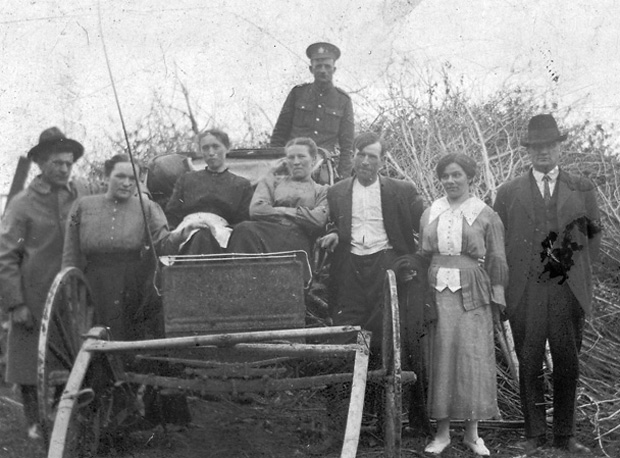Village News
Sharing Stories of Women Who Have Lived Remarkable Lives

As you might have heard, we opened our new exhibit, Beyond Tradition: The Lives of Mennonite Women, on Monday, June 13th in the Gerhard Ens Gallery. This exhibit provides nuance to the stories we tell in the Village. We’re going “beyond” the way we usually talk about Mennonite women in history by focusing on the women who, by choice or by circumstance, went “beyond tradition.” These women influenced immigration and settlement, became the heads of their families in times of need, had careers when that wasn’t something most Mennonite women did, and sought a larger role in the church when women weren’t allowed in leadership positions. We also wanted to include the stories of Mennonite women who never married.
When Curator Andrea Dyck and I were planning this exhibit, we knew that we would not be able to talk about everyone we wanted to – either we weren’t able to find suitable photos (or, if we could find them, they weren’t a high enough resolution to include on our panels), we didn’t have any artifacts belonging to these women, or we simply didn’t have enough information about them. Once we opened the exhibit, we were delighted and honoured that it has prompted people to tell us about extraordinary women in their own families whom we might have included in our exhibit, if only we had known about them.
We don’t want these stories to stop with us. We want other people to hear them as well. To make this possible, we are developing an exhibit that we hope you, our visitors, will help us create! It’s very easy: when you visit Beyond Tradition, we invite you to write a woman’s story on a card and pin it to the exhibit board in the gallery. It’s as simple as that. The woman you write about doesn’t even have to be Mennonite! Our objective is to collect and share stories of women who have lived remarkable lives, so if you have a newspaper clipping you want to include, or a photograph you want to share, please do feel free to post them. (Just don’t give us an original, as we can’t guarantee you’ll get it back.)
As an example of a story that we were unable to include in our interpretive panels but which will be included in this portion of the exhibit, let me close by telling you the story of Agnes Fast Anderson (1883-1977).
Agnes Fast Anderson grew up in Steinbach. She was taking her nurse’s training in Minneapolis when she came home for a visit, and stayed to care for the victims of the 1918 Spanish Flu epidemic. Because there was neither doctor nor hospital at the time, Agnes cared for her patients in the school, which had been converted into a makeshift hospital. One by one her helpers fell sick, though only one of her patients succumbed to the flu. Agnes herself did not fall ill until the worst of the epidemic was over. Die Steinbach Post, when reporting on the epidemic on December 4, 1918, wrote of Agnes and her work at the hospital: “There are only three patients left in the hospital and Agnes Fast is tending to them and they are recovering rapidly under her care, as all the rest have been doing as Miss Fast proves to be an able nurse and has done a great and noble deed to the village of Steinbach.”
Do you know of any extraordinary women we should be including in our exhibit? Drop by the Gerhard Ens Gallery or find us on Facebook to let us know!




